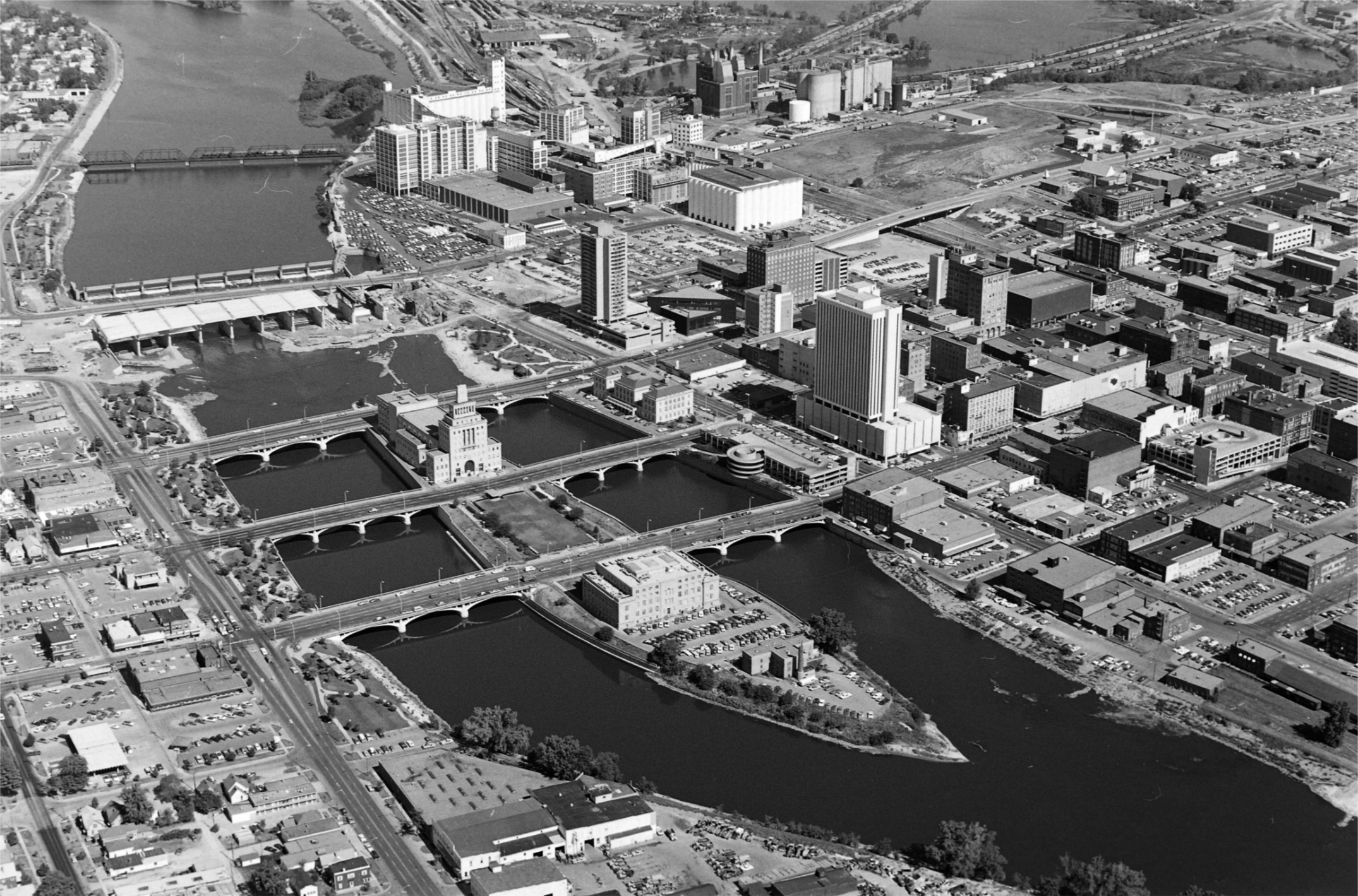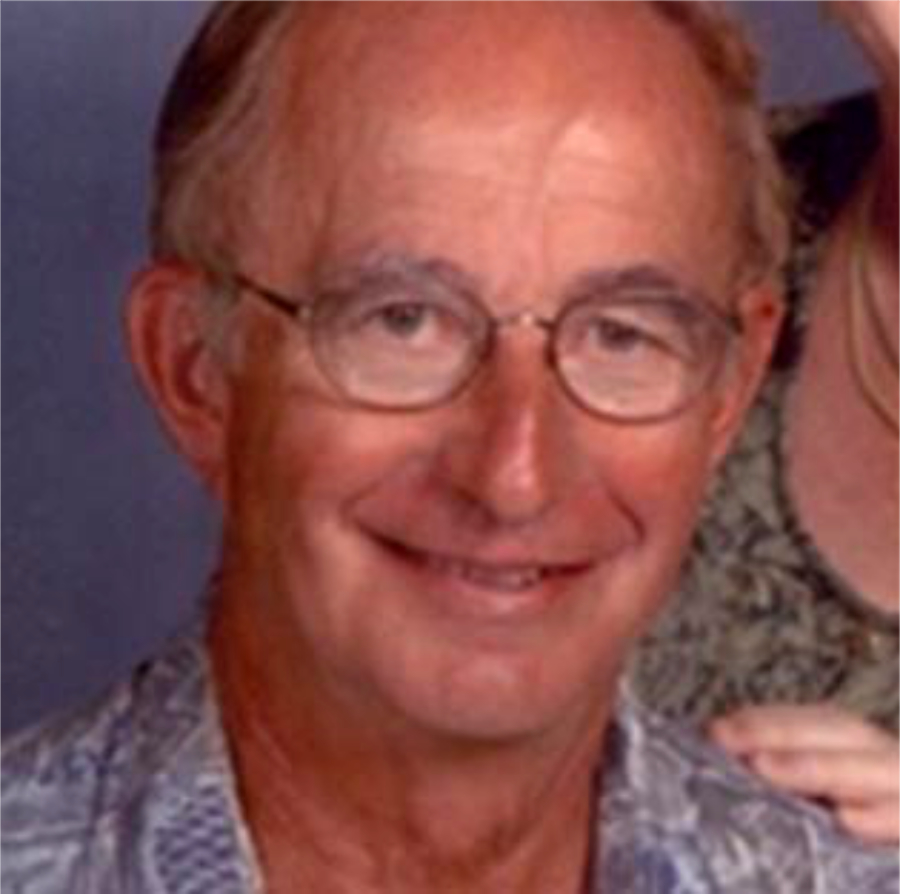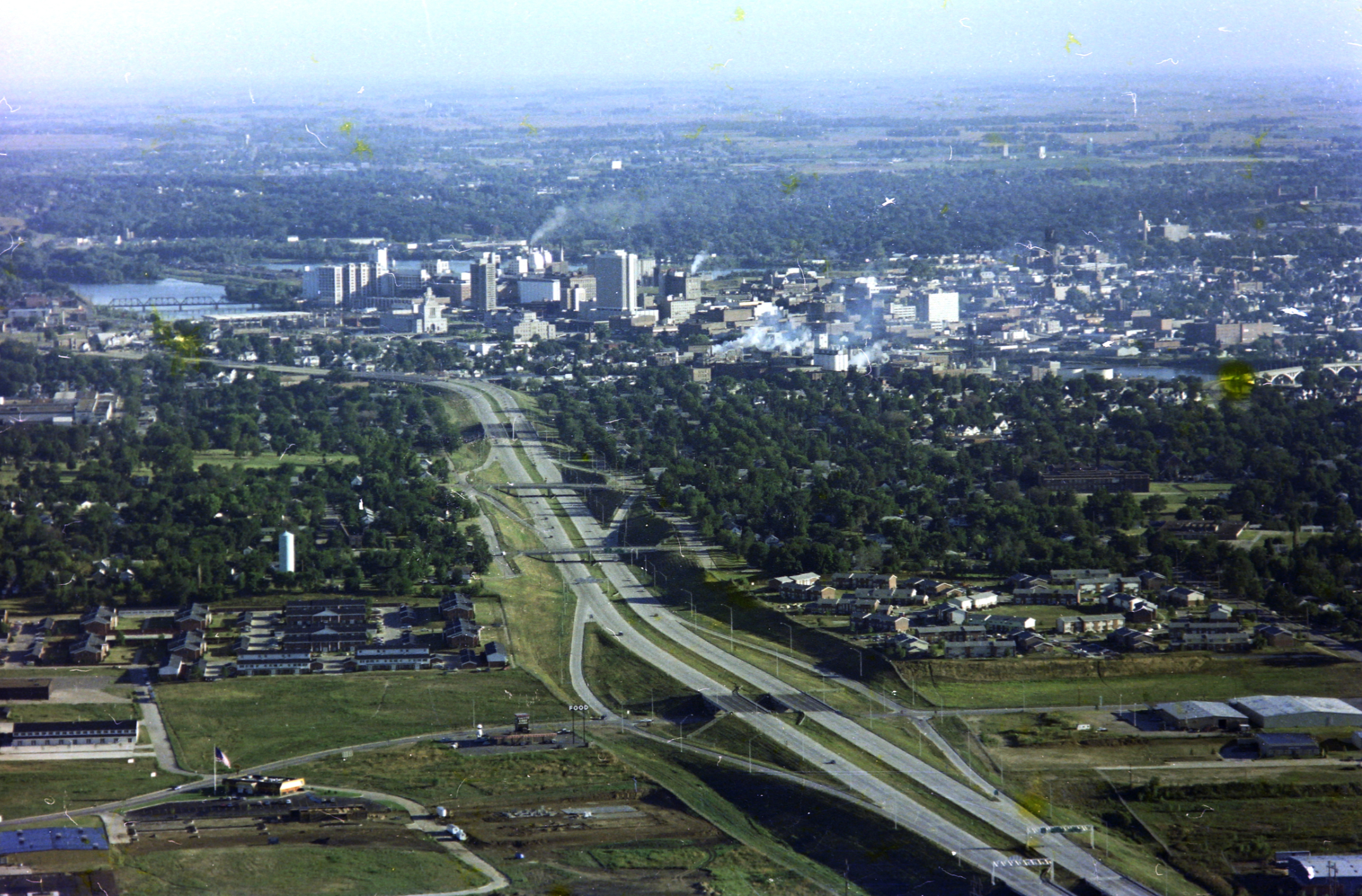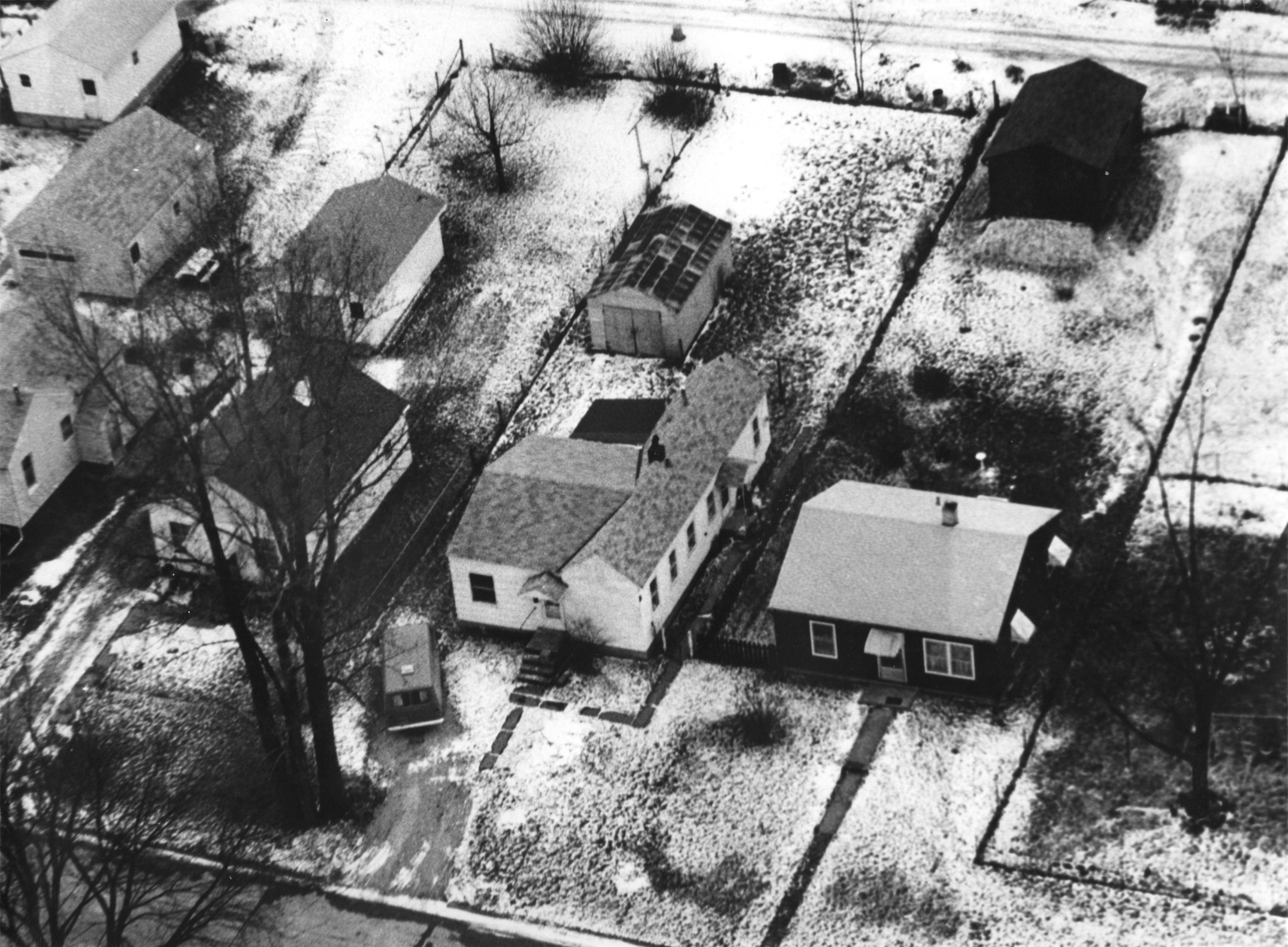Flying in a helicopter
Butch
For a couple of years before I started working for the Department of Planning and Redevelopment at the City of Cedar Rapids in 1972, I had been developing a keen interest in photography. So shortly after I began work there I learned that one of the other employees in the department, Dick Kvach, had just earned his pilot’s license and I asked him to take me up flying with him so I could do some aerial photography. He was trying to build up hours of flight time and one noon hour he said, “Grab you camera, let’s go for a ride.” He had just been promoted to the Zoning division of the department. His idea was that he would fly around the places that were up for rezoning and I would take pictures of the locations so the Zoning Commission would have a better idea of what was in the neighborhood. I would also take pictures of the future land use map, ground level photography and any other pictures that would be helpful in determining whether to grant a zoning change. The pictures were such a success that the commission voted to outfit me, through the department, with a complete camera setup. I continued taking aerial photos for the rest of the time I worked for the City.
Not long after I started taking the zoning pictures there got to be some question about whether the flying that Dick was doing would be considered “commercial” aviation and if he needed a more advanced license to be allowed to continue. Also, I think there was a problem with paying for the flight time. Don Salyer, the Director of Planning, called me into his office one day and asked if it would be ok if I flew in the City’s helicopters instead of with Dick. I said yes in a heartbeat.

Not only was it a lot more fun flying in the helicopters, they could do things that a light plane just could not do. Light planes have to stay at least 1000 feet above ground level, oftentimes requiring telephoto lenses. Taking photos with a telephoto lens in a plane is not the best because of the excess camera jiggle. Helicopters can fly as low as they want. This can make for much more dramatic and detailed images.
Helicopters do have some drawbacks though. The fuselage is often made of bubble shaped perspex. This contributes to distortion in the photos from shooting through curved plastic. The answer to this problem is easy to solve, take the door off. That’s fine till Winter comes and you are flying at an altitude where the temperature is well below 0 degrees Fahrenheit. I had to get a snowmobile outfit and heavy gloves which could be problems themselves. All sorts of people offered to take the pictures for me to get a ride in the helicopters. I told them that would be great but they had to start the next February and I would keep the summer months for myself. Volunteer offers fell of dramatically.
The first flight I did, I had to drive out to the airport to catch my ride. We, John Sadler and I, flew into the city at about 300 feet above ground level. This was an amazing flight. As we flew over the corn fields on the way in, I could see birds perching on the fence wires and mice running down the corn rows. You were close enough to talk to people but the roar of the engine made it impossible to hear anything, and besides you had a headset on anyway. As the city’s cartographer I knew where just about everything in the city was anyway but before we left for the photo shoot I would mark the locations where we were going on a pocket sized map of my own development. This not only helped with finding what we were looking for, but with flying between locations in the most efficient manner.
I started out flying from the airport, but we soon figured out that since most of my work was in town, it made more sense for John just to land on the island, in front of City Hall. That cut out four needless trips to the airport or back. That went very well at first, but before long the Parks Commissioner, Stan Reinis, noticed there was a brown spot beginning to show on the grass where we landed. The exhaust from the engine pointed straight down. A quick fix was building a small paved area and it incorporated a place to set up the City’s Christmas tree in the winter. When we took off, we flew up or down the river over the water so if we ran into any mechanical problem we would have a soft landing in the water. We never had a problem. When we reached sufficient altitude we turned left or right and started taking pictures.
During the early days of the Aviation program lots of things were tried to see what would be most effective. The first picture of me shows one of the helicopters with pontoons which could be used for water landings. I never personally landed on the water though. Before long the pontoons went away and were not used again as far as I know. I flew in three different types of helicopters; Hillers, Hughes, and the gigantic Huey renowned from its Viet Nam War days.
Flying without a door was a scary business at best. The only thing between you and the ground was the seat belt that held you in. Luckily, ours were military models with wide, thick straps and heavy duty hardware. It was a four point system; one strap from the left, one from the right, one over the left shoulder and one over the right shoulder. All the clamps came together right below your belly button. It was standard procedure to clamp the belt, then double check it to make sure it was fastened. The most frightening flight I ever had was once, right after take off. We were gaining altitude and John was just starting to turn right. That made the helicopter roll to the right (my side). The door was off of course. I looked down and my seat belt was unbuckled. I didn’t want to show any alarm because that could cause John to try and over-correct and maybe make me fall to my death. Trusting to centrifugal force to keep me in the seat, I slowly gathered up the ends of the belts and clipped them back together. There we go, all strapped in again, safe and secure.

After taking many pictures of the downtown, we learned that there was one view that most people liked the best. We called it the “Standard shot”. It centered on Mays Island, where the government buildings were located and was from straight south and at about 500’ altitude. We were directly above Diagonal Drive where Interstate 380 crosses over it. I have taken this shot over 100 times. John would head west, aiming for that intersection. I would be lining my shot up, and when he was in just the right spot, he would say, “Now!” I would take the picture and there would be one more version for the record.

Sadly, after I left working for the City, John was riding down the highway on his motorcycle when a mattress blew out of the back of a pickup truck he was following and killed him.



From time to time I flew by a place that I had lived. I would take a picture if I could.
This post is part of the StoryWorth project that I am participating in.
At the ButchieBoy main page click the Storyworth catagory to see all the entries in the series.

Enjoyed your article. My cousin, Don, flew helicopters in Vietnam for the Marine Corps. He told some scary stories. I have only ridden on one once while on vacation in Kauai.
Ray